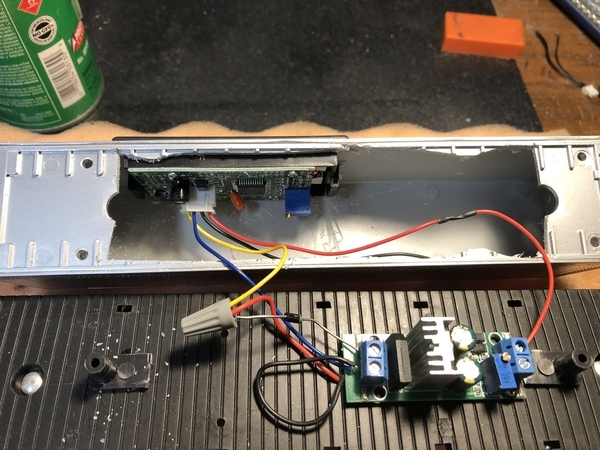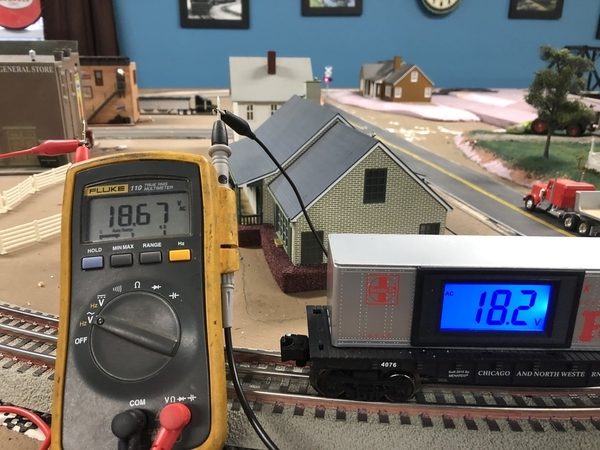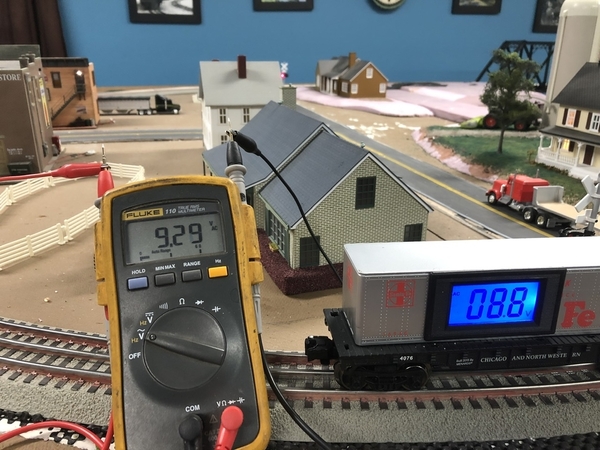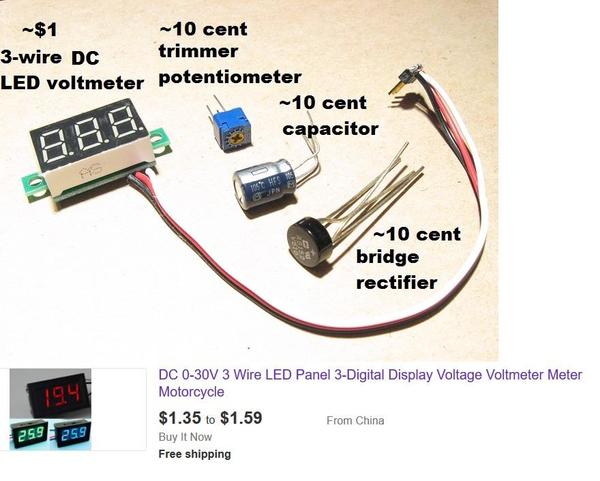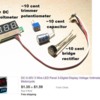This subject has come up several times in the past, and I don't think there has been a workable solution suggested; my apologies if I am wrong about that. The problem is that the readily available offshore digital AC voltmeter/ammeter combos will not operated down in the range of 0 to 20 VAC where we want to be. They typically have a lower voltage limit of about 80 VAC from what I have seen. And yes, you can use good old analog voltage and amperage "needle" type meters, but they take up acres of panel space.
I cooked up the simple little circuit below to enable matching a digital DC voltmeter to a low AC voltage, using one of the small 2 wire 3 digit voltmeters that are inexpensively available on a certain auction site, like this one:
The simple circuit below converts the AC to DC and uses a two resistor voltage divider bridge to force the voltmeter to display the voltage as AC, though of course it is really measuring DC. I have made a spreadsheet for doing the resistor calcs, but in reality it's easier to just use a 10K pot, driving the DVM off the center wiper pin.
Using a pot in the 10K range keeps the current drain across it down to about 4 ma, or 1/10 of a watt, so the pot doesn't overheat. For my breadboard test circuit I used a small Bourns style 3362P pot, but a multi-turn 3596W would give a more precise adjustment of course. But I had no trouble adjusting the readout with the 3362P to match the supply AC voltage for this example. The small voltmeter could even be mounted on the same circuit board to make it compact, and allow simple 2 wire AC hookup on the layout.
Now this does not provide a way to measure the current of course, but it sure looks like it will work for voltage at least. It would be easy to mount several of these little guys in your panel, or even distributed around the layout, so as to monitor different loops, sidings, accessory voltages, etc. These voltmeters are available in several display colors including red, green, yellow, blue, and maybe more. So I am throwing this out here just for comments, ideas, critique, etc.
Rod






